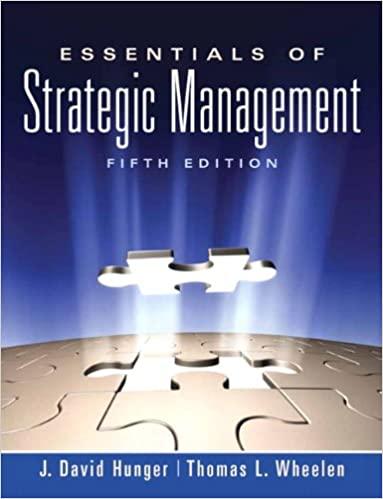Question
1. Start by explaining, with an example how MRP systems work in terms of: Master Production Schedule - includes forecast demand and actual orders Explosion
1. Start by explaining, with an example how MRP systems work in terms of:
Master Production Schedule - includes forecast demand and actual orders Explosion of BOM - a detailed breakdown of all component parts within the final product Stock levels - quantity, location and transaction records Lead-times - time required from order to delivery including safety margin.
Marks will be given for an appropriate diagram or example. An explanation of how the main elements work together should also be included and answers should give an explanation of the calculations that are performed by MRP using the information from the MPS, BOM and stock data such as material requirements per finished unit and time-phased net material requirements. The main benefit comes from the co-ordination of purchasing activity in terms of purchase orders in progress and recommended aggregation of materials and components that have dependent demand. MRP systems also help to manage stock levels and scheduling. Answers should provide discussion regarding the explosion of the BOM via the MPS and how MRP considers the lead-times of raw materials and components in order to tie this in to delivering the final product on time. MRP also gives information about what is on order. Implementation can be challenging due to: Difficulties defining user needs, training and development Accuracy of data and adapting to new processes and procedures Need for accurate stock data Managing the people element of the implementation - ensuring good project management and having a steering group to direct the necessary work streams The need for implementation and consultancy support which can fit in with supplier selection.
Answers are expected to place roughly equal emphasis on benefits and challenges associated with implementing MRP systems. Stronger answers will provide a well-balanced discussion and demonstrate a comprehensive understanding of MRP systems, their benefits and limitations as a 'push' method of control. A) Explain with an appropriate example, how a materials requirement planning (MRP) system works. B ) Analyze the benefits and challenges associated with the implementation of an MRP system. C) Explain the relationship between Aggregate Planning and Material Requirements Planning.
2. Answers should explain that repair maintenance is reactive and generally relates to equipment failures and related problems. Preventive maintenance is pro-active and aims to avoid or reduce failures through regular scheduled inspection and attention.
Stronger answers will also recognize that the appropriateness of the two approaches will depend on factors such as industry sector and level of investment required in equipment and machinery. The discussion here relates to the implications of planned and unplanned maintenance. Whilst planned preventative maintenance tends to be more expensive initially, it can prove cheaper than responding to equipment failure if the costs are considered holistically in a whole life costing approach. Unplanned repair maintenance can be very disruptive, and the operations manager will need to carefully consider factors such as levels of after-sales support, availability of spares, response times and the associated costs.
Marks will be given for identifying the operational and cost implications for an organization in terms of loss of production and disappointing customers. For example, in capital intensive sectors it is a major area that needs close attention as failure can cost much more than just the lost production. It can lead to lost reputation and lost long term business and even legal challenges for not supplying. Answers should recognize and discuss the implications for the business. Planned preventive maintenance will ensure maximum uptime to ensure that an organization delivers its products on time every time. It is about utilizing assets when they are needed to be productive and deciding when the best opportunities are for downtime at a time to suit the organization. Stronger answers may use appropriate examples and will recognize that planned preventative maintenance is part of the lean approach and should ensure that an organization has better control of maintenance and repair costs in the longer term.
A) Explain the differences between repair and preventative maintenance.
B ) Discuss the implications of each approach when developing an asset maintenance strategy.
C) Defend how Maintainability and Availability impact Overall Equipment Effectiveness (OEE)
Step by Step Solution
There are 3 Steps involved in it
Step: 1

Get Instant Access to Expert-Tailored Solutions
See step-by-step solutions with expert insights and AI powered tools for academic success
Step: 2

Step: 3

Ace Your Homework with AI
Get the answers you need in no time with our AI-driven, step-by-step assistance
Get Started


